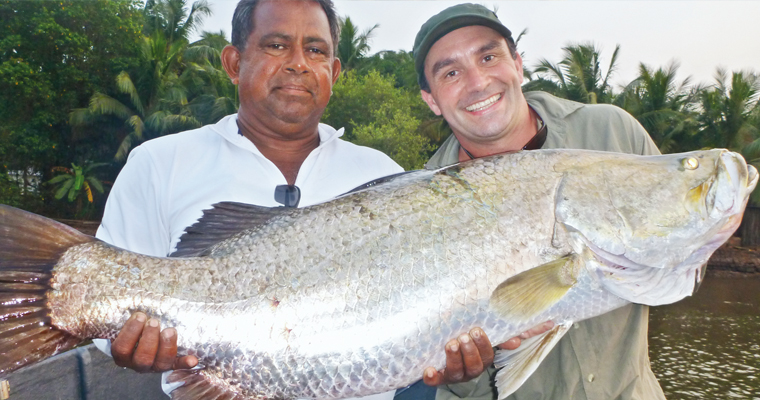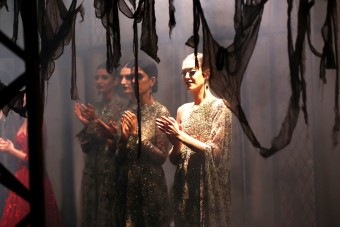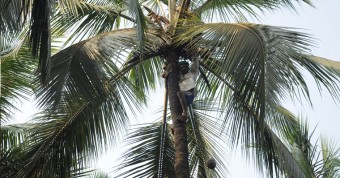Tony Estrocio (left) with a huge barramundi
.
Imagine the scene: you’re at sea and your line suddenly jerks violently and you realize there’s something very big on the other end. Perhaps a shark or a giant barramundi or a threadfin salmon. The adrenaline soars and, tadalafil once the animal is squirming about on your boat, so does the pride in your heart. For you have just caught a monster of a fish.
And then you take a deep breath, snap a photo, unhook the creature and throw it back into the sea.
True, many people who fish in Goa do keep their prize. But growing numbers do it for the thrill, not the catch – the true spirit of the sport called angling. And at a time of severe overfishing that is threatening to deplete key fish populations in the seas off Goa, freeing the creatures after catching them is the most responsible way to fish.
Tony shows off a grouper
“Goa is a great place to fish, but it has been overfished because of the trawlers who come and fish close to the shore,” says Dean Gonsalves, an angler from Mumbai who is married to a Goan and loves to fish in Goa.
A media professional, he travels all over the country to fish as a sport. “But Goa is still a great place to fish because it offers more in terms of convenience. It’s easier to access the good spots for fishing, you can get boats very easily, and good professional equipment is available very easily,” he says.
His favourite fish to catch is the barramundi – chonak in Konkani. But he never eats the fish he catches, though he eats fish otherwise. “In Goa there are a lot of people who go fishing and they catch some of these big fish and then take them home and butcher them. They’re massacring these big fish, because of which you get fewer fish now,” he says.
People fish everywhere in Goa – alongside rivers, in ponds and lakes, and in the open seas on hired boats. Tony Estrocio of Dona Paula is one of the best-known in the angling business and has been organizing boat trips for nearly 40 years. John Fernandes, of John’s Boat Trips in Candolim, also organizes fishing trips almost every day during the tourist season.
Many of their clients fish for the first time in their lives. A popular trip takes folks to Grande Island off Mormugao harbor, on the eastern side of the island. Once there, they are given fishing lines and told how to fix the bait on the hooks. The tourists then throw the line into the water and usually catch small, exotic, colourful, tropical fish which abound in that area – then set them free. Then it’s off to the western side of the island where they lunch on some superb grilled fish.
“Just the other day a woman came to me after she had eaten some crabs and wanted to go and catch a crab,” John says. “So we organized a boat trip for her in the Candolim mangroves to catch some crabs.” he says.
Tony, too, gets charter tourists from abroad, as well as domestic tourists. He specializes in fishing trips for amateur and pro anglers and supplies all the required equipment from his collection of high-quality gear.
The tool and the catch
“This year was not as good as last year,” he says of the angling business. While he encourages people to release the hooked fish, he says it’s not a compulsion. “Most of them keep the fish with them,” he says, explaining that besides tourists, he also gets a lot of locals who want to go fishing. For inshore fishing the boats don’t venture beyond 6-7 kms, he says, while offshore fishing can take him and his boat up to 60-70 kms into the sea. “The deeper the water, the bigger the fish,” he says.
Goa is filled with spectacular fishing spots. Among them is Tiracol at the northern tip of the state, on the rocks below the fort. If you’re there at the right time when migratory Sails come to the Goan coast, then you might get lucky and hook one of those mighty predators. The rocks near Fort Aguada are also popular, as is the Mandovi bridge and the Zuari bridge or the jetty below the Zuari bridge, which is legendary for Thread-Fin Salmons. Cabo da Rama in the south is also popular. All river mouths are considered good places to fish, and the best time, for rivers, is when the tide is coming in, or getting high. Fishing gear is easily available in Goa. In Panjim you can get it all at Champs, the sports shop near the church. Most villages will have a small shop selling fishing lines for a few rupees.
US-based Rajiv Mahadkar says, “I have been visiting Goa for the last 32 years and it still amazes me. I live in the US and visit Goa almost every year for some fishing.”
Although it all looks simple, hook, line and sinker, there is a lot in fishing that you only learn with time. Plus, every fish has its own character. Says Dean, “The Snapper is tenacious and unpredictable, and once he launches his attack there is no half measure – he thoroughly hooks himself. The grouper is happy gulping down anything and everything he deems edible, which sometimes includes things that are bigger than him.”
Angling for sport or eating pleasure is a great adventure and friendships formed while fishing are some of the longest-lasting bonds. And while you’re at it, spare a thought for the big fish out there – and consider setting them free to roam the endless seas.
.
.
.





